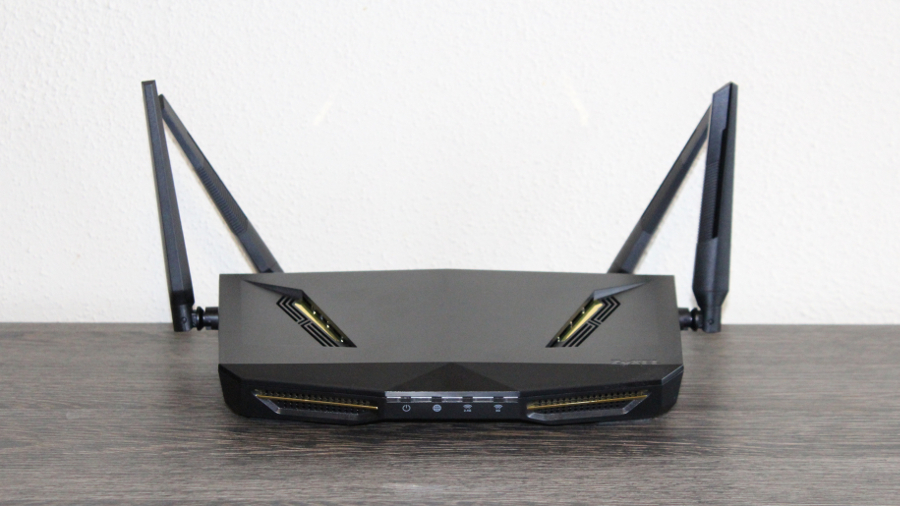TechRadar Verdict
In-depth traffic analysis tools along with StreamBoost and MU-MIMO technology makes this quad-stream 802.11ac router a compelling buy.
Pros
- +
Good MU-MIMO wireless speeds
- +
Excellent traffic analysis software
- +
Nifty physical design
Cons
- -
Few current devices can use quad-stream 802.11ac
- -
Average USB port speeds
- -
Sparse visual design
Why you can trust TechRadar
The Armor Z2 is Zyxel’s most high-end product to date in its networking portfolio, which includes a range of NAS units, extenders and power line adaptors as well as a number of products aimed at business users. Although the company is not quite as big or well known as some networking brands, previous Zyxel kit we’ve looked as usually been quite nifty, often with a feature or two that stands out, good performance and decent value for money as well.
So we had high hopes when setting up the Armor Z2, a dual-band 802.11ac wireless router that supports most of the latest networking features offered by its competition. After considerable testing and use, we’re please to say the Armor Z2 met our expectations.
It offers up to 800Mbps over 2.4GHz 802.11n, and 2167Mbps over 802.11ac, with a compatible client. There’s MU-MIMO support, which increases throughput when multiple devices are connected, and StreamBoost, also known as Dynamic QoS, an automatically updating traffic-prioritising technology that is supported by routers that are built with certain Qualcomm chipsets, and is therefore found in a number of competing products as well. There’s also an app for configuration, called Zyxel One Touch.
- The Armor Z2 sits among the best wireless router of 2017
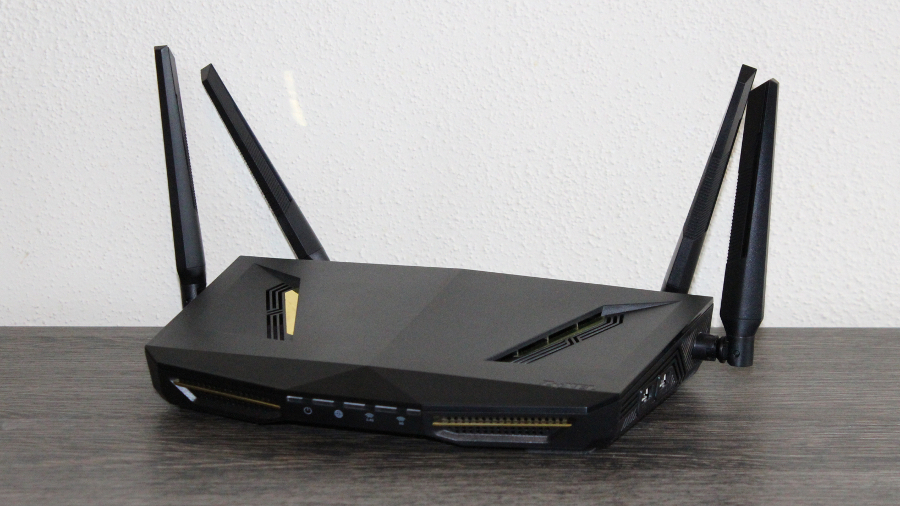
Design
The appearance is clearly aimed at gamers, with a sleek black plastic casing, highlighted with small tinges of yellow in the various crevices and curves that contribute to the ‘alien-like’ appearance.
The slim dimensions of the Armor Z2 contribute to a compact and low profile design, at least by modern standards, considering some of the monster-sized router models from companies like Asus. Across, it’s 250mm, but just 9.8mm high.
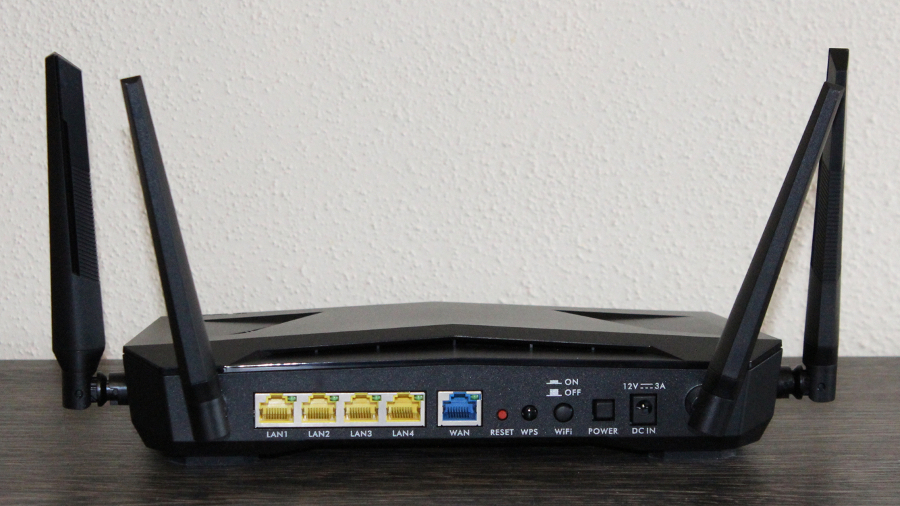
And unlike certain phones, no ports have been left out in the quest for slimmer casing. At the back there’s the full array of four gigabit ethernet ports and a WAN port, with a pair of USB 2.0 and USB 3.0 ports at the side. The four antennas surprisingly are not removable, a consideration if you want to replace with larger, custom antennas that theoretically could improve range.
Inside is a dual-core 1.7GHz processor with 512MB of memory, a reasonable specification that’s comparable with most modern high-end router models. It contributes to fast performance when navigating the various menus within the web-based Armor Z2 software interface. Pages load and update almost instantaneously, a great benefit when making changes to the router’s settings.
Sign up for breaking news, reviews, opinion, top tech deals, and more.
The interface design is fairly sparse. Unlike the graphics-heavy appearance of Linksys or Asus networking software, there are no widgets on the front page, and a lot of information is relayed as tables of text. The front page provides a single map of your home network, listing all the connected devices, with other functions available in ‘Expert’ mode. A series of software toggles underneath let you turn off the white LEDs at the front of the unit, enable parental controls, guest wifi access and notifications.
Switch to Expert mode and the front page is take over with device information presented as a long page of text, including details of WAN and LAN IP addresses, MAC addresses, wireless information and resource utilisation.
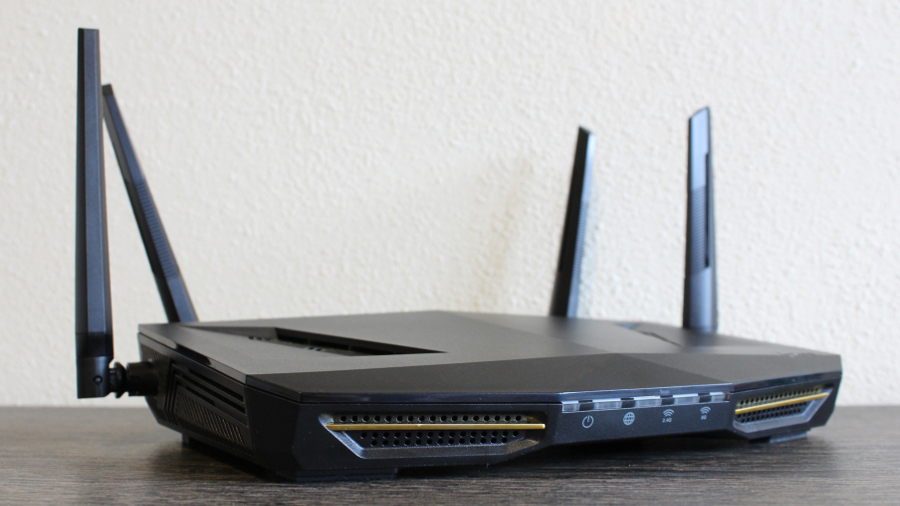
If you’ve not heard of StreamBoost before, it works by dynamically prioritising traffic data, based on the data it needs. It should know how much data to allocate when a client is watching Netflix, or when gaming, and free up enough resources to ensure good performance if another bandwidth-hogging activity is happening at the same time, such as a large file download.
The application profiles it uses are created from monitoring users’ anonymous behaviour, an entirely opt-in process.
While all the settings pages of the Armor Z2’s interface are fairly sparse, Zyxel has pulled out all the stops with its traffic monitoring tool, which not only looks great, but also displays a far more complete set of information than we’re used to seeing provided
You can see a live view of how bandwidth is being distributed to clients, great for diagnosing rogue applications gobbling up bandwidth in a house, and a ‘fool-proof’ way to work out when the kids are online when they should be in bed.
There’s also a slick graphical display of bandwidth usage over time, which shows total amounts downloaded and uploaded over up to 30 days, but also what applications have been used and by what clients. Again, it’s a useful tool to diagnose whether a person or device is using more data than they should, and if you’re on a metered internet connection, you can then take steps to restrict that data usage.
In term of the physical design and software, the Zyxel Armor Z2 gets a well-deserved thumbs up, then, but what of the performance?
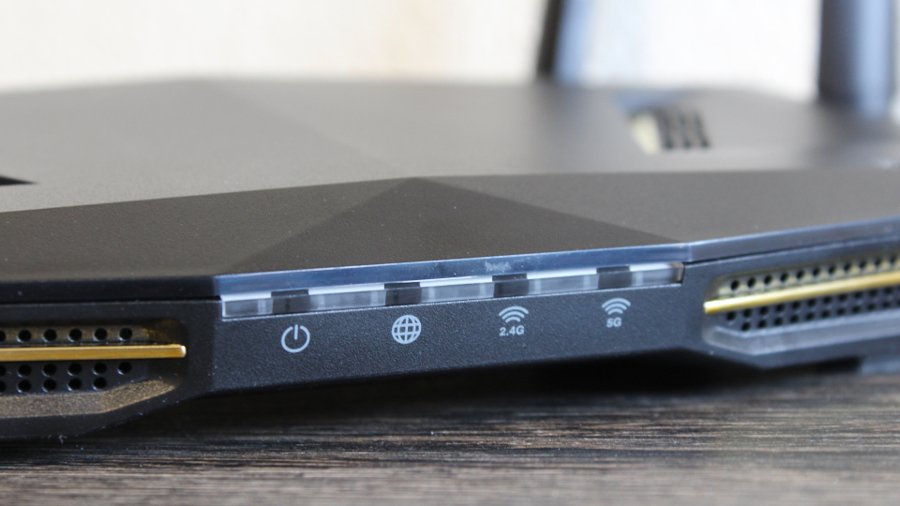
Performance
We tested the Armor Z2 at three ranges over both its 5GHz and 2.4GHz wireless bands, using a MacBook Pro with a triple stream 802.11ac adaptor. Testing was carried out at 1m, 5m and 10m distances with line of sight to the router.
In practice, speeds from one single connection depend on both the client and router. Your laptop or device may not support the full quad-stream capabilities of the Armor Z2, and there are few devices on the market that do. One of these is the Asus PCE-AC88U 802.11ac wireless card, for desktop PCs.
Although the Armor Z2 wasn’t quite fast enough to earn any records, its short and long-range transfer speeds are at least competitive with other high-end router models.
Over 802.11ac we recorded a receive speed of 657 MB/sec at 1m distance 297 MB/sec at 5m distance, and 125 MB/sec at 10m.
Send speeds were a bit faster at longer range, with 623 MB/sec at 1m, 342 MB/sec at 5m and 267 MB/sec at 10m.
And over 802.11n we recorded good results too. We recorded receive speeds of 88 MB/sec at 1m, 68 MB/sec at 5m, 54 MB/sec at 10m, with send speeds of 96 MB/sec at 1m , 84 MB/sec at 5m, 72 MB/sec at 10m.
While our laptop wasn’t utilising the full potential of the Armor Z2, the 802.11ac speeds are still respectable and in line, if not beating, many other wireless routers on the market, with any differences being rather slim. Performance is no weak point here.
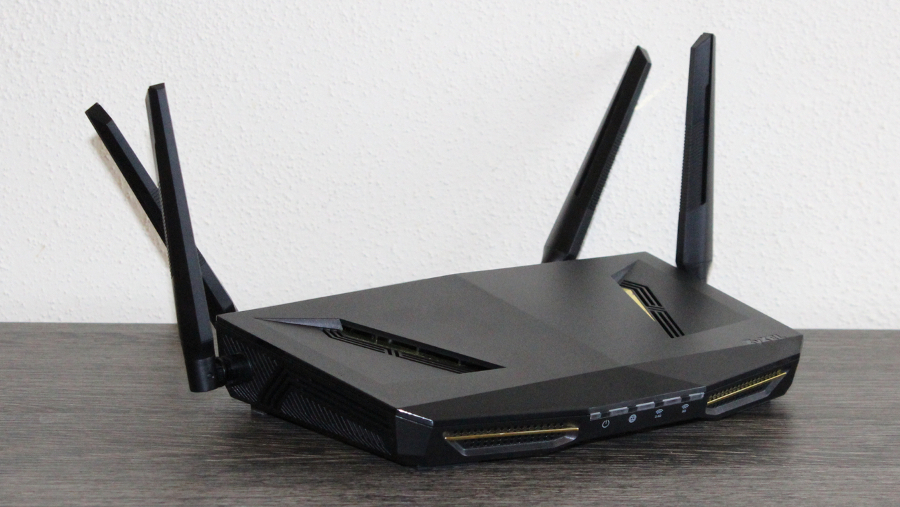
Final verdict
Great looks, well-designed software and good performance go a long way towards earning the Zyxel Armor Z2 a recommendation. While it’s not exactly cheap, it’s priced comparably with other quad-stream MU-MIMO routers. And best of all, it was noticeably reliable during the entire time we tested it without a single drop-out or reboot needed in a whole month, something that cannot be said of every router on the market.
